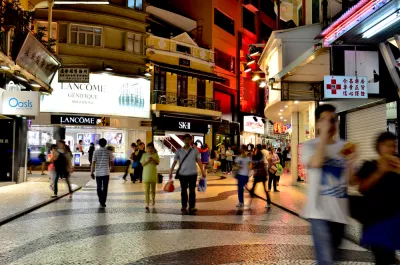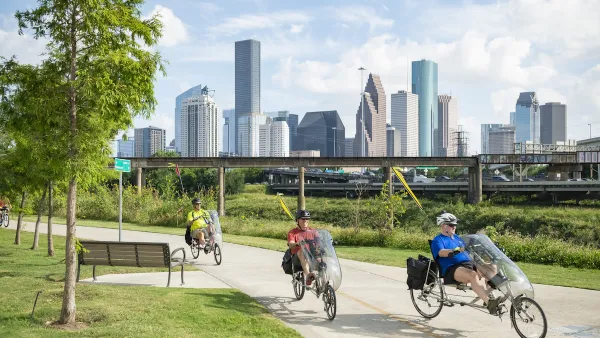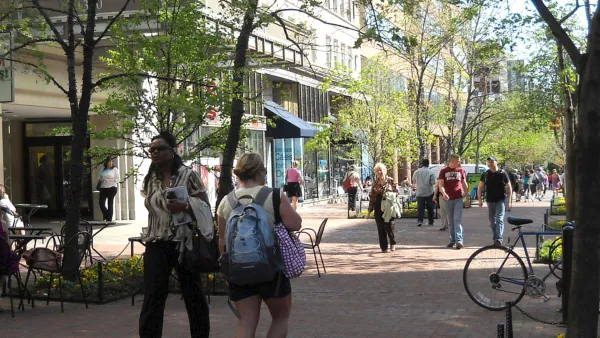Cities are putting together the pieces of walkability, but there's still work to be done in completing the puzzle.

Laura Laker writes a feature story on how cities are making their cities more walkable, and why:
The modern obsession with autonomous and electric vehicles, dockless scooters and bicycles means it is easy to forget the humble pedestrian. However, as almost every journey starts or finishes on foot, we are ignoring a fundamental part of what makes a city great.
To gather the evidence for the story, Laker surveys representatives from organizations like the UK walking charity Living Streets, the design and planning company Arup, and the National Association of City Transportation Officials (Nacto).
The article goes into detail on case studies from Auckland, London, Manchester, Hanoi, Denver, Addis Ababa, and San Francisco. One particularly compelling anecdote from these case studies:
Notoriously car-centric Auckland in New Zealand recently published a report showing pedestrians as the most economically important transport mode in the city. They estimated that policies which put people off walking on Queen Street, a major shopping area, cost NZ$11.7m (£5.9m) a year.
While there are many examples of cities working hard to improve safety for pedestrians, and from numerous approaches the many risks facing pedestrians, Laker makes one thing abundantly clear: there's still along way to go and cities will require a lot of strong leadership to make dreams of a truly walkable city come true.
FULL STORY: What would a truly walkable city look like?

Analysis: Cybertruck Fatality Rate Far Exceeds That of Ford Pinto
The Tesla Cybertruck was recalled seven times last year.

National Parks Layoffs Will Cause Communities to Lose Billions
Thousands of essential park workers were laid off this week, just before the busy spring break season.

Retro-silient?: America’s First “Eco-burb,” The Woodlands Turns 50
A master-planned community north of Houston offers lessons on green infrastructure and resilient design, but falls short of its founder’s lofty affordability and walkability goals.

Test News Post 1
This is a summary

Analysis: Cybertruck Fatality Rate Far Exceeds That of Ford Pinto
The Tesla Cybertruck was recalled seven times last year.

Test News Headline 46
Test for the image on the front page.
Urban Design for Planners 1: Software Tools
This six-course series explores essential urban design concepts using open source software and equips planners with the tools they need to participate fully in the urban design process.
Planning for Universal Design
Learn the tools for implementing Universal Design in planning regulations.
EMC Planning Group, Inc.
Planetizen
Planetizen
Mpact (formerly Rail~Volution)
Great Falls Development Authority, Inc.
HUDs Office of Policy Development and Research
NYU Wagner Graduate School of Public Service




























